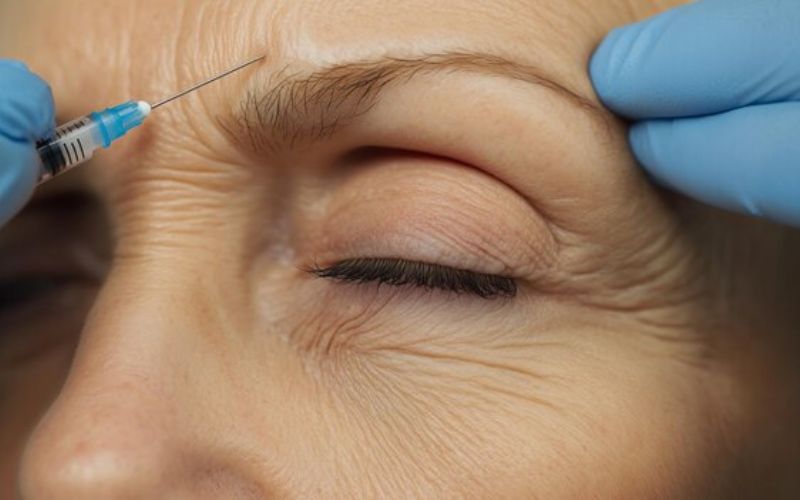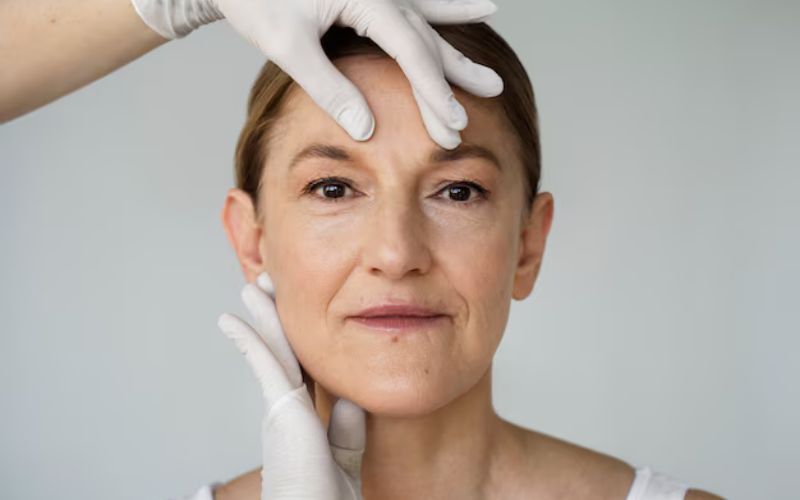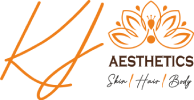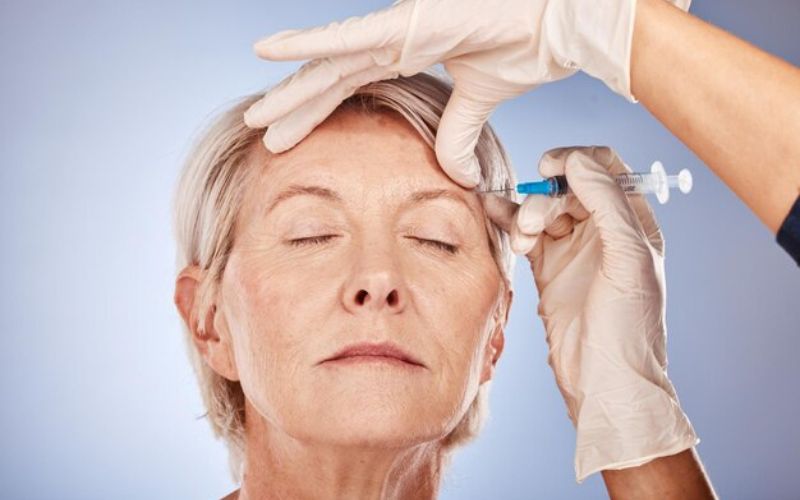Introduction
Botox injections have become a popular choice for those looking to reduce wrinkles and achieve a more youthful appearance. This comprehensive guide, provided by Kj Aesthetics and Dr. Vishal Brahmabhatt, will cover everything you need to know about Botox, including treatment procedures, recovery, potential side effects, and the science behind this anti-aging solution. The keyword botox for wrinkles is central to understanding the benefits of this treatment.
Understanding Botox: What Is It?
Botox, or botulinum toxin, is a neurotoxin produced by the bacterium Clostridium botulinum. It works by blocking nerve signals in the muscles where it is injected. This temporary paralysis of muscle activity can reduce the appearance of wrinkles, particularly those caused by repeated muscle movements like frowning or squinting. The effectiveness of botox for wrinkles is well-documented, making it a top choice for many seeking cosmetic improvements.

Types of Wrinkles Treated by Botox
Dynamic Wrinkles: Caused by muscle movements, such as frown lines and crow's feet.
Static Wrinkles: These are visible when the face is at rest and can be softened with botox for wrinkles, although they may require additional treatments.
The Science Behind Botox Injections
Botox functions by inhibiting the release of acetylcholine, a neurotransmitter that causes muscles to contract. By blocking this chemical signal, Botox temporarily relaxes the muscles, reducing the appearance of wrinkles and fine lines. The application of botox for wrinkles targets these underlying muscle contractions, providing smoother skin.
Mechanism of Action
Botox binds to the nerve endings at the injection site.
It prevents the release of acetylcholine, effectively stopping muscle contractions.
The result is a smoother appearance of the skin above the treated muscle, demonstrating the effectiveness of botox for wrinkles.
How Long Does Botox Last?
Botox typically lasts between 3 to 4 months. The longevity of the effects can vary depending on factors such as the area treated, the amount of Botox used, and individual metabolic factors. Over time, as the muscle activity gradually returns, the wrinkles and fine lines may start to reappear, which is why regular treatments of botox for wrinkles are recommended to maintain the results.

Should I Get Botox at 40?
Getting botox for wrinkles at 40 is quite common and can be an effective way to reduce the appearance of existing wrinkles or prevent new ones from forming. At this age, dynamic wrinkles (those caused by facial movements) may become more prominent, and Botox can help smooth them out. It’s essential to consult with a qualified professional like Dr. Vishal Brahmabhatt at Kj Aesthetics to determine if botox for wrinkles is suitable for your skin type and aesthetic goals.
Is Botox Safe for the Face?
Yes, botox for wrinkles is generally safe for the face when administered by a trained and experienced professional. It has been FDA-approved for cosmetic use and has a long history of being used safely in various areas of the face, including the forehead, around the eyes (crow’s feet), and between the eyebrows (frown lines). However, as with any medical procedure, there are potential risks and side effects, so it’s important to choose a reputable provider to minimize these risks.
The Botox Treatment Procedure
Botox injections are a minimally invasive procedure, typically completed in a short office visit. Here’s what you can expect:
1. Consultation Initial Assessment: Dr. Vishal Brahmabhatt will assess your skin condition and discuss your aesthetic goals. Personalized Plan: A customized treatment plan is created based on your specific needs, particularly if you're considering botox for wrinkles.
2. Preparation Skin Cleansing: The area to be treated is cleansed to prevent infections. Marking the Injection Sites: Key areas where wrinkles are most prominent are marked for precision, especially when planning botox for wrinkles.
3. Injection Administration: Botox is injected using a fine needle into the targeted muscles. Duration: The procedure typically takes 10 to 30 minutes, depending on the number of areas being treated with botox for wrinkles.
4. Post-Treatment Care
Immediate Aftercare: You may be advised to avoid lying down or massaging the treated area for several hours.
Follow-up: A follow-up appointment may be scheduled to assess the results and make any necessary adjustments to your botox for wrinkles treatment.
Recovery After Botox Injections
Recovery from Botox injections is generally quick and uncomplicated, but understanding what to expect can help you prepare, especially when receiving botox for wrinkles.
Immediate Aftercare
Avoid Touching or Rubbing: This helps prevent the toxin from spreading to unintended areas. Stay Upright: Avoid lying down for at least four hours post-treatment. Skip Exercise: Refrain from strenuous physical activities for 24 hours to minimize bruising.
Managing Common Side Effects Redness and Swelling: These are typical and should subside within a few hours. Bruising: This can occur at the injection sites and may last a few days. Mild Discomfort: Any discomfort is usually mild and can be managed with over-the-counter pain relievers.
Long-Term Care Results Duration: Botox effects typically last 3 to 4 months. Regular treatments are needed to maintain results. Lifestyle Considerations: Sun protection and a healthy skincare routine can help prolong the benefits of botox for wrinkles.
Potential Risks and Side Effects
While Botox is generally safe when administered by a qualified professional, it’s important to be aware of potential side effects, especially when using botox for wrinkles.
Common Side Effects Bruising and Swelling: These are the most common and usually resolve within a few days. Headache: Some patients may experience mild headaches after treatment. Temporary Muscle Weakness: In the treated area, temporary weakness may occur.
Rare But Serious Side Effects Allergic Reactions: Symptoms include itching, rash, or difficulty breathing. Immediate medical attention is required. Drooping Eyelid (Ptosis): This can occur if the Botox spreads beyond the intended area. Difficulty Swallowing or Breathing: Very rare but requires immediate medical intervention.
Reducing the Risk of Side Effects : Choose an Experienced Practitioner: Dr. Vishal Brahmabhatt’s expertise reduces the risk of complications. Follow Post-Treatment Guidelines: Adhering to aftercare instructions is crucial for minimizing side effects, especially when using botox for wrinkles.
Botox for Wrinkles: Is It Right for You?
Botox for wrinkles is an effective solution for many people, but it’s not suitable for everyone. Here’s how to determine if it’s the right option for you:
Ideal Candidates Adults with Dynamic Wrinkles: Those looking to reduce frown lines, crow’s feet, or forehead wrinkles. Healthy Individuals: It’s important to be in good general health without any neurological conditions. Realistic Expectations: Candidates should have realistic expectations about what botox for wrinkles can achieve.
When Botox Might Not Be Suitable Pregnancy or Breastfeeding: Botox is not recommended during pregnancy or breastfeeding.
Certain Medical Conditions: People with neuromuscular disorders should avoid botox for wrinkles.
Allergies to Botulinum Toxin: If you have a known allergy, Botox is not suitable.
Cost of Botox Injections at Kj Aesthetics
Understanding the cost is an important aspect of deciding on botox for wrinkles treatment.
Pricing Factors Number of Units: Botox cost is often based on the number of units used. Treatment Areas: Larger areas or multiple treatment sites will increase the overall cost of botox for wrinkles. Practitioner’s Expertise: Prices may vary depending on the experience and reputation of the provider.
Insurance Coverage
Cosmetic Use: Botox for cosmetic purposes is typically not covered by insurance.
Medical Use: In some cases, when Botox is used for medical conditions like chronic migraines, insurance may cover the cost.
Frequently Asked Questions (FAQ)
Botox is a purified protein derived from the bacterium Clostridium botulinum. It's used in cosmetic procedures to temporarily relax the muscles that cause wrinkles, particularly in areas like the forehead, around the eyes (crow's feet), and between the eyebrows.
Conclusion
Chemical peels offer a powerful solution for various skin concerns, from hyperpigmentation and acne scars to fine lines and wrinkles. Understanding the different types of chemical peels and choosing the right one for your skin can make a significant difference in your results. At KJ Aesthetics, Dr. Vishal Brahmabhatt and his team are dedicated to helping you achieve your best skin with safe, effective, and personalized chemical peel treatments.

